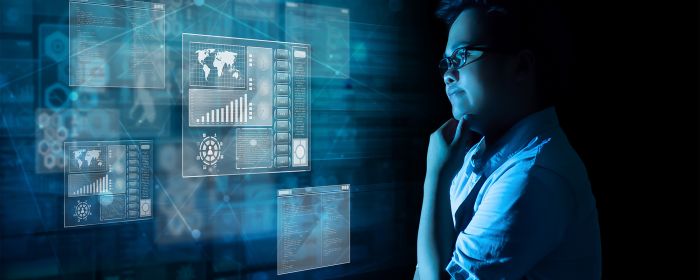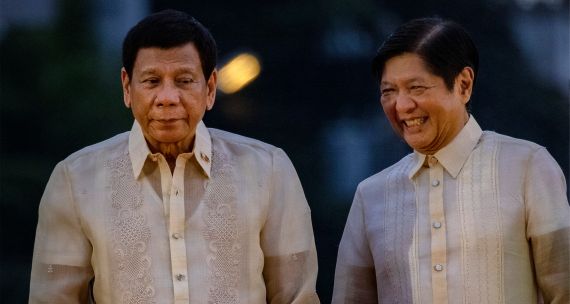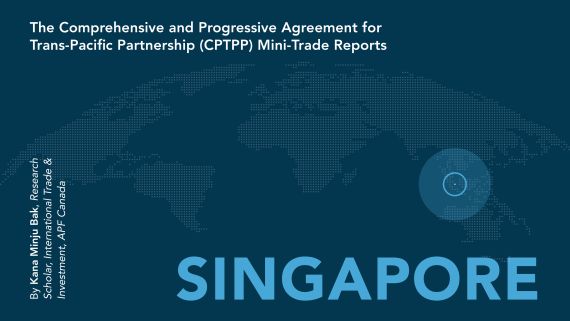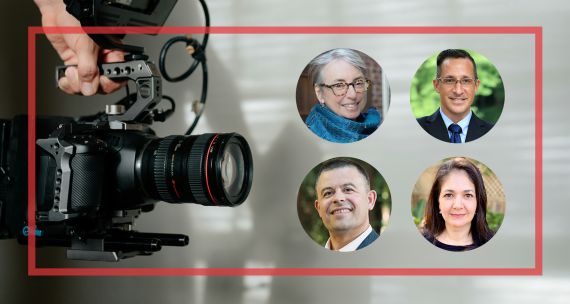In the global economy of the future, 5G networks will be the backbone of technological advancement and integral to economic growth. Ultra-fast, strong, and widespread internet connectivity provided by 5G networks will be essential to the industrial-scale operation of ‘Industry 4.0’ technologies such as the Internet of Things (IoT) and the development of smart cities. This is especially true for the Philippines, a country with the highest number of social media users globally – but one of the lowest in terms of its mobile internet speed. A study by consulting firm Kearney predicts that the introduction of 5G networks will result in a 50-fold increase in internet speed and an annual revenue boost of up to US$650 million for Philippine telecommunication firms by 2025.[1] The establishment of a 5G network will help the Philippines overcome technology infrastructure weaknesses and increase national productivity by enabling widespread digital adoption across all sectors of the economy. However, the Philippines’ decision to allow Huawei equipment in its 5G networks in the context of the 2019 U.S. ban of Huawei amid rising U.S.-China tensions is potentially problematic for the Philippines’ foreign relations and domestic politics.
While the situation is still evolving, there remains the chance that technological tensions between the two superpowers may boil over to the point of a complete bifurcation of 5G systems, bringing into question the interoperability of countries using Huawei, and those that don’t. But even without a potential bifurcation, the use of Huawei 5G has already proven deeply contentious for the Philippines, where its use raises three potential unknowns: How it may affect the Philippines’ vital military partnership with the U.S.; how the global political controversy and security concerns associated with Huawei 5G could negatively impact its inbound FDI inflows; and how it might impact the country’s 2022 presidential elections.
5G in the Philippines and the global Huawei controversy
Against growing Sino-American tech tensions, Washington banned Huawei in 2019 due to national security concerns over potential surveillance and espionage. The U.S. pushed other countries to take similar action against the company, putting the Philippines in an uncomfortable position. In 2019, during a visit to Manila, U.S. Secretary of State Mike Pompeo explicitly called on regional allies to not use Huawei and stated that “America may not be able to operate in certain environments if there is Huawei technology adjacent to that.”[2] More recently, it was reported that U.S. National Security Adviser Jake Sullivan warned Brazil during an official visit in August 2021 against using Huawei for its 5G network.[3]
A 2018 Eurasia Group White Paper on 5G geopolitics argues that a bifurcation between the 5G ecosystems of China and America creates a tough dilemma for third countries, particularly developing economies forced to choose between a lower-cost option and their allegiance to the U.S. This may be an especially tough choice for countries that rely on Chinese financing through the Belt and Road Initiative or other infrastructure projects. [4] The Philippines is one such ‘developing market’ already tied to China through the BRI (among other Chinese FDI inflows) and has chosen to go with the less expensive Huawei equipment. For the Philippines (and many other developing economies), Huawei is the cheapest option for launching 5G services and keeping up with the rapid technological revolution globally, U.S. pressure notwithstanding. This decision poses political and technical challenges for the Philippines, since the U.S. and China are considering using different wireless frequency spectrum (high versus low) strategies, creating the potential issue of interoperability.[5] The U.S. government favours high frequencies since it owns a large portion of this frequency (sub-6 spectrum) and controls its commercial use.[6] Furthermore, 5G networks are highly customized, making it extremely difficult and expensive to switch vendors since it would require replacing the entire system.[7]
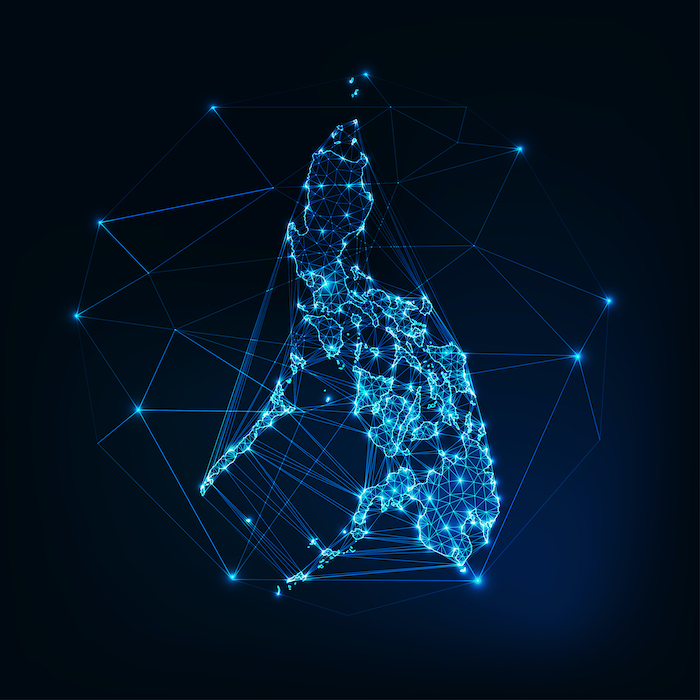 While there is no solid evidence of Huawei using its network to spy on private citizens, the worries nonetheless remain valid and are of great concern in the Philippines. Some Huawei critics point to the fact that, according to Chinese law, Huawei executives would not be able to refuse Beijing’s requests for private user data and other sensitive information. For example, Article Seven of China’s National Intelligence Law requires Chinese corporations and citizens alike to co-operate with “state intelligence work.”[8] In the Netherlands, Huawei garnered intense scrutiny when a report made for Dutch mobile company KPN by the Capgemini consultancy firm in 2010 became public. The report claimed that Huawei could have been monitoring KPN’s 6.5 million users – including the calls of then-prime minister Jan Peter Balkenende – without KPN’s knowledge.[9] KPN claims that it “never observed that Huawei took client information,” but also acknowledges the Capgemini report’s existence.[10] In 2020, KPN was one of the first European telecommunications providers to exclude Huawei from its 5G network, choosing Ericsson as its supplier instead. Similar alleged security leaks and hacks involving Huawei-supplied data centres have also emerged in Papua New Guinea and Ethiopia. These incidents, coupled with Huawei’s ties to the Chinese state and increasing pressure from the U.S. to ban Huawei, have made the use of Huawei 5G equipment in the Philippines a political firecracker.
While there is no solid evidence of Huawei using its network to spy on private citizens, the worries nonetheless remain valid and are of great concern in the Philippines. Some Huawei critics point to the fact that, according to Chinese law, Huawei executives would not be able to refuse Beijing’s requests for private user data and other sensitive information. For example, Article Seven of China’s National Intelligence Law requires Chinese corporations and citizens alike to co-operate with “state intelligence work.”[8] In the Netherlands, Huawei garnered intense scrutiny when a report made for Dutch mobile company KPN by the Capgemini consultancy firm in 2010 became public. The report claimed that Huawei could have been monitoring KPN’s 6.5 million users – including the calls of then-prime minister Jan Peter Balkenende – without KPN’s knowledge.[9] KPN claims that it “never observed that Huawei took client information,” but also acknowledges the Capgemini report’s existence.[10] In 2020, KPN was one of the first European telecommunications providers to exclude Huawei from its 5G network, choosing Ericsson as its supplier instead. Similar alleged security leaks and hacks involving Huawei-supplied data centres have also emerged in Papua New Guinea and Ethiopia. These incidents, coupled with Huawei’s ties to the Chinese state and increasing pressure from the U.S. to ban Huawei, have made the use of Huawei 5G equipment in the Philippines a political firecracker.
In 2019, President Rodrigo Duterte’s administration approved Huawei’s 5G network project in partnership with two of the country’s largest telecommunications companies: Globe Telecom and Smart Communications. Another Filipino telecommunications giant, PLDT, announced in 2020 that it would launch its own 5G mobile services using equipment from both Huawei and Swedish supplier Ericsson. However, like in Canada, some Philippine telecommunications companies have announced their intent to diversify suppliers and move away from Huawei of their own volition after earlier rolling out services using Huawei equipment. In a September 2020 Philippine Senate public services hearing, Globe Telecom General Counsel Froilan Castelo reported it was in talks with other companies searching for non-Huawei alternatives for future 5G equipment.[11] This prudent strategy of supplier diversification is not standard across all Philippine telecommunications providers and is not enforced by government regulation. Moreover, while Globe and Smart said they intended to diversify using Ericsson and Nokia, over 85 per cent of their 5G networks were still supplied by Chinese telecom firms as of November 2020.[12]
Notably, the newest major arrival to the Philippine telecommunications scene, Dito, also uses Huawei equipment and, in March 2021, started rolling out 5G services. Forty per cent of Dito is owned by Chinese state-owned China Telecom, the maximum percentage of equity allowed under Philippine law for foreign investors.[13] Anxieties over Dito’s ownership structure increased in September 2020 when Philippine Defense Secretary Delfin Lorenzana announced that Dito would be participating (alongside Globe and Smart) in the construction of cellphone towers within military bases.[14] Retired Supreme Court Justice Antonio Carpio and Senator Ralph Recto have both voiced concerns over the security of such networks, with Senator Recto calling the project “an electronic Trojan horse” and “a creeping economic invasion.”[15] Indeed, there are mounting concerns in the Philippines that allowing China (through its private associates like Huawei and Dito) to participate in crucial industries and infrastructure such as telecommunications will give China economic leverage and create national security threats if relations between Beijing and Manila deteriorate.[16] Security, hacking, sabotage, and disinformation are other risks that have been raised. China’s motives in helping the Philippines acquire 5G technology have become entangled with other controversial foreign and domestic issues in the Philippines. Given the Philippines' reliance on the U.S. military, especially in the context of territorial protection, the continued usage of Huawei 5G is a potential sore point in already strained U.S.-Philippine relations.
U.S.-Philippine military collaboration
The Philippines has struggled over the past few years under the Duterte administration to balance its relationship between Beijing and Washington. President Duterte took a conciliatory approach to China (compared to his predecessors) by ignoring at best and disdaining at worst a 2016 landmark ruling by the International Permanent Court of Arbitration regarding Philippine territorial rights in the South China Sea vis-a-vis China. Then, in early 2020, Duterte formally notified the Trump administration that the Philippines was terminating the 1988 U.S.-Philippine Visiting Forces Agreement (VFA), a cornerstone of the U.S.-Philippine security partnership in Southeast Asia that regulates the rotation of U.S. troops in the Philippines for training exercises. Following the abrupt cancellation, the VFA was strung out with six-month extensions before Duterte finally approved its renewal during a visit from U.S. Secretary of Defense Lloyd Austin in July 2021. In line with the Biden administration’s more proactive stance on Southeast Asia territorial disputes, Secretary of State Anthony Blinken also publicly warned China against its “provocative behavior” in the South China Sea, citing the U.S.-Philippine Mutual Defense Treaty.[17] And more recently, after the Chinese coast guard blocked Filipino supply boats en route to Ayungin Shoal in November, Manila affirmed that an armed attack on its ships could trigger the same U.S.-Philippines defence treaty.
Despite this recent improvement in bilateral relations, the Biden administration has yet to address the use of Huawei 5G equipment in the Philippines, especially in key military bases. The U.S. government clearly believes that Huawei poses a security risk and has pushed other countries to ban Huawei. Still, it has failed to directly address the consequences (if any) of one of its closest and most important security partners in Southeast Asia using Huawei 5G equipment for military communications. The inability to trust the security of such vital communications channels poses interesting challenges for military intelligence sharing and collaboration between the Philippines and the U.S. Moreover, while the Biden administration has publicly announced its support for the Philippines vis-à-vis territorial disputes with China, some critics caution against a premature celebration. Experts indeed argue that the VFA will remain “under threat” as long as Duterte remains president”[18],[19].
The U.S. has remained a staunch ally of the Philippines despite the cooler relationship it has had with the Duterte government and is admittedly unlikely ever to abandon the Philippines to defend itself in Asia. Certainly, intelligence sharing between the Philippines and the U.S. is more limited than the intelligence sharing between the U.S. and its Five Eyes allies. But there is a distinct possibility that the increased security concerns around the use of Huawei 5G equipment in Philippine military bases will significantly dampen the ability of the U.S. and the Philippines to share critical military intelligence. With the future leadership of the Philippines to be decided in national elections next May, it is still unclear how far the U.S. will keep pushing its oldest Southeast Asian ally on the Huawei issue now that the VFA is back in place.
Foreign direct investment and the Philippines’ digital economy
The risks to the Philippines’ foreign economic ties (i.e. foreign direct investment and the digital economy) that the use of 5G Huawei equipment presents is another potential hazard looming in the background. The COVID-19 pandemic has further pushed the Philippines to ramp up digitalization. It is estimated that the country’s digital revenue (digital media, e-commerce, and e-services) will reach C$8.3B by the end of 2021 and is forecast to hit C$13.88B by 2025.[20] Secure 5G connectivity will become increasingly important for the continued digitalization and growth of the Philippines’ economy. As an example of just one sector that relies heavily on internet connectivity, the Philippines has emerged as a digital economic powerhouse in the global IT-BPO (Information Technology-Business Process Outsourcing) industry, also referred to as Business Process Management (BPM), or simply, the BPO industry. As of 2020, this industry employed some 1.3 million workers and accounted for roughly nine per cent of the Philippines’ GDP.[21] Industry revenue is expected to reach C$38B by 2022.[22] The industry attracts foreign direct investment (FDI) by offering services across the spectrum of business – from customer support call centres and technology support and development services for smaller companies to supporting multinational corporations (MNCs) – all of which rely on a strong and safe internet. Many companies worldwide offshore their crucial business services to the Philippines, valued for its growing, well-educated, and English-speaking workforce.
But to remain competitive in the international digital economy and continue attracting FDI in its BPO sector, the Philippines requires a robust digital infrastructure, including strong internet service, to continue providing quick and efficient but secure services to clients abroad. This demands careful management of all aspects of the Philippines’ 5G internet network rollout. While the rollout of 5G networks in the Philippines will undoubtedly provide strong internet connectivity, the use of Huawei 5G equipment has cast doubts on the security of such networks due to alleged Chinese state ‘back-doors’ built into Huawei systems. As Sino-American tensions over 5G networks unfold and polarize the Philippines, MNCs operating and investing in the country would do well to watch how these tensions impact the Philippines’ BPO industry and other sectors of the economy within the global value chain.[23] If foreign MNCs invested in the Philippines digital economy cannot trust the security and stability of the 5G networks through which their business is conducted, it could have serious ramifications for the country’s overall FDI inflows. The Philippines’ economy has already been badly impacted by the COVID-19 pandemic, with 2020 FDI inflows contracting nearly 25 per cent year-on-year.[24] Financial rating agency Fitch downgraded the Philippines’ outlook from “BBB – stable” (which it has held since 2017) to “BBB – negative” in July 2021 primarily due to the continued economic challenges created by COVID-19.[25] Commercial political risk assessments by Oxford Analytica in the first quarter of 2021 classified the Philippines as “medium-risk,” where the operational risk to businesses is frequent but has middling ramifications and can be ameliorated through active management and broadening or diversifying exposure.[26]
It is unlikely that U.S.-China tensions over tech and trade will ease any time soon, which will continue to pose challenges to countries like the Philippines. The ability of the Philippine BPO industry to safeguard the data of its clients as they transition to faster 5G networks is integral to the continued success. Being able to process digital business operations is, of course, a necessity for the Philippines digital economy to keep up with global competition, but protecting client data and addressing security concerns are equally important. In addressing concerns over the security of 5G networks using Huawei equipment, the Philippines’ telecommunications providers face an extremely tough decision. If these firms were to remove Huawei equipment completely, the immense cost and delay in the complete rollout of 5G services would critically undermine the future of the Philippines’ digital economy. Eliseo Rio Jr., the former Acting Secretary of the Philippines’ Department of Information and Communications Technology (DICT), noted in 2020 that telecoms Globe and Smart were investigating diversification options to comply with the U.S. Clean Network Program since the two firms serve global, U.S., and European companies operating in the Philippines.[27] Still, 5G coverage continues to progress rapidly throughout the country. As for Huawei 5G, while it has taken something of a backseat to the deeply destabilizing effects of the pandemic, it could well emerge as a front-burner issue for the Philippines as it navigates the future investment flows that will be critical to its economic recovery.
Domestic divisions and the 2022 presidential elections
The Philippines is polarized on several national issues relating to China, both within the government and between the government and the population. While the Duterte administration has approved the rollout of 5G using Huawei equipment, public confidence in Huawei is remarkably low. According to a 2020 survey of Association of Southeast Asian Nations (ASEAN) professionals in research, business and finance, public sector, civil society, and media, the leading preferred 5G developer for the Philippines is Samsung at 51.8 per cent, while Huawei scores the lowest for trust at 2.9 per cent alongside other Chinese companies ZTE and Datang Telecom.[28] Interestingly, Chinese 5G developers are preferred over American developers in all ASEAN economies, except in the Philippines and Vietnam.[29] This indicates that despite regional trends of Huawei acceptance, the Philippine public remains suspicious and likely trusts the American narrative on 5G. Regardless, the Duterte administration has maintained its policy supporting Huawei 5G.
Furthermore, a 2021 report by the ASEAN Studies Centre at the ISEAS-Yusof Ishak Institute found that 95 per cent of Philippine respondents are “worried about [China’s] growing regional political and strategic influence,” and 86.6 per cent chose the U.S. over China when asked which country they would pick if the Philippines was “forced to align itself with one of the two strategic rivals.”[30] The Duterte government’s foreign policy has not channelled this enthusiasm and has instead tried to benefit from a relationship with both countries –lukewarmly angling for U.S. support in the South China Sea while courting Chinese support for infrastructure projects through the Belt and Road Initiative (BRI) and embracing Huawei 5G. Indeed, the Duterte government is trying to walk a thin line, balancing the strong influences the U.S. and China both have on the Philippines. In this context, the domestic controversy over Huawei 5G is deeply interconnected with the larger national question of superpower alignment. Being so inextricably tied up with domestic anti-Chinese sentiment, the future of Huawei 5G in the context of Sino-U.S. relations could be a divisive issue in the Philippines’ 2022 elections, with the Eurasia Group identifying broadening U.S.-China tensions as a top risk for 2021.[31]
According to the Philippine Constitution, Duterte can only serve a maximum of one term as president; however, there is no written legislation banning him from running as vice president in next year’s elections. In August 2021, the leaders of the current ruling political party, PDP-Laban, formally endorsed Rodrigo Duterte as its vice presidential candidate – a nomination he formally accepted on August 24.[32] Additionally, his daughter Sarah remains the leading candidate for the 2022 presidential elections, and Duterte has many other allies among fellow politicians who share his policy views. A continuation of the Duterte legacy and his administration’s dual-track approach to the U.S. and China, however that plays out next year, will undoubtedly be deeply divisive and present a risk to domestic political cohesion in the Philippines.
Conclusion
The Philippines has been walking a very thin line between the U.S. and China, as are many countries in Southeast Asia. Based on ongoing tensions around the development and implementation of 5G, the Philippines is likely to experience further pressure to pick a side if tensions escalate between the U.S. and China and a bifurcation between their two 5G ecosystems becomes a reality. The potential consequences of a bifurcation include a weakened security relationship with the U.S., a loss of foreign investment from Western corporations who distrust Huawei 5G equipment, and the deepening of divisive and volatile anti-Chinese sentiments in domestic politics. As of last year, the U.S. had already persuaded a significant number of countries to ban or limit Huawei technology through the Clean Networks Program, including several Eastern European states, the United Kingdom, Germany, France,[33] Australia, and Japan.[34] More recently, in July 2021, the U.S. gained a new win in the 5G rivalry when Malaysia chose Ericsson over Huawei to supply its 5G network in an abrupt turn-around.[35] In a continuation of his predecessor’s hard-line on Huawei, President Biden signed legislation on November 11, 2021, preventing companies that are considered national security threats (including Huawei) from receiving U.S. regulatory licenses.[36] Biden also appears to be engaging in a long-game strategy, co-operating with allies like Japan and South Korea to get ahead of China in developing the next generation of telecom networks – 6G.[37]
For now, neither superpower has overtly put further pressure on the Philippines to choose a side. But the controversy over using Huawei 5G equipment in the Philippines has become entangled with several key national issues, from U.S.-Philippine security relations (especially in the context of the South China Sea) to the future of the Philippine digital economy vis-à-vis foreign investment. Despite the government’s support for Huawei 5G, some Philippine telecommunications companies like Globe and Smart have announced intentions to diversify their 5G equipment suppliers. Other Philippine telecommunications companies are taking a ‘wait and see’ approach until the 2022 election is complete.
The choice between domestic and international political pressure over the security of Huawei 5G and the economic necessity of a quick and cheap 5G rollout as a pathway to pandemic recovery will be a key issue that the new Philippines government will need to deal with following next year’s elections. Over the last few years, the Philippines has emerged as a promising state with economic and geostrategic importance, but managing the still-evolving security, economic, and political risks associated with Huawei 5G (and future challenges around 6G) may be one of its toughest challenges yet.
Endnotes
[1] Manila Bulletin Admin, “5G Rollout Could Boost Annual Revenues of Philippines Telecom Operators by 650 Million Dollars,” Manila Bulletin, March 6, 2020, https://mb.com.ph/2020/03/06/5g-rollout-could-boost-annual-revenues-of-philippines-telecom-operators-by-650-million-dollars/.
[2] Richard Javad Heydarian, “Ignoring the US, Philippines Goes with Huawei,” Asia Times, July 18, 2019, https://asiatimes.com/2019/07/ignoring-the-us-philippines-goes-with-huawei/.
[3] Jeff Mason and Michael Martina, “U.S. Warned Brazil That Huawei Would Leave It ‘High and Dry’ on 5G,” Reuters, August 9, 2021, sec. Technology, https://www.reuters.com/technology/us-warned-brazil-about-chinas-huawei-5g-network-white-house-official-2021-08-09/.
[4] Eurasia Group, “Eurasia Group White Paper: The Geopolitics of 5G,” November 15, 2018, https://www.eurasiagroup.net/siteFiles/Media/files/1811-14%205G%20special%20report%20public(1).pdf.
[5] Eurasia Group, “Eurasia Group White Paper: The Geopolitics of 5G,” November 15, 2018, https://www.eurasiagroup.net/siteFiles/Media/files/1811-14%205G%20special%20report%20public(1).pdf.
[6] Jeremy Hsu, “How the U.S. Can Prepare to Live in China’s 5G World,” IEEE Spectrum, April 23, 2019, https://spectrum.ieee.org/how-america-can-prepare-to-live-in-chinas-5g-world.
[7] Craig S. Smith, “How the Huawei Fight Is Changing the Face of 5G,” IEEE Spectrum, September 29, 2021, https://spectrum.ieee.org/huawei-sanctions-fight-changing-5g.
[8] Kara Frederick, “The 5G Future Is Not Just about Huawei,” Foreign Policy, May 3, 2019, https://foreignpolicy.com/%0D2019/05/03/the-5g-future-is-not-just-about-huawei/.
[9] Jon Henley, “Huawei ‘May Have Eavesdropped on Dutch Mobile Network’s Calls,’” the Guardian (The Guardian, April 19, 2021), https://www.theguardian.com/technology/2021/apr/19/huawei-may-have-eavesdropped-on-dutch-mobile-networks-calls.
[10] Jon Henley, “Huawei ‘May Have Eavesdropped on Dutch Mobile Network’s Calls,’” the Guardian (The Guardian, April 19, 2021), https://www.theguardian.com/technology/2021/apr/19/huawei-may-have-eavesdropped-on-dutch-mobile-networks-calls.
[11] Katrina Hallare, “Globe Telecom Eyes Use of Non-Huawei Equipment amid US-China Tension,” INQUIRER.net, September 23, 2020, https://business.inquirer.net/307951/globe-coming-up-with-another-strategy-with-other-telecom-equipment-company-amid-us-huawei-tensions.
[12] Miguel R. Camus, “For PH Telcos That Have Long Embraced China Tech, Biden Shift Won’t Matter,” INQUIRER.net, November 23, 2020, https://business.inquirer.net/312336/for-ph-telcos-that-have-long-embraced-china-tech-biden-shift-wont-matter.
[13] Neil Jerome Morales and Karen Lema, “China-Backed Telecom Firm Says Won’t Spy on Philippines,” Reuters, September 17, 2020, sec. Media and Telecoms, https://www.reuters.com/article/us-philippines-telecoms-idUSKBN2681E3.
[14] Sebastian Strangio, “Controversial China Projects Reveal Philippine Rifts,” The Diplomat, September 11, 2020, https://thediplomat.com/2020/09/controversial-china-projects-reveal-philippine-rifts/.
[15] Jarius Bondoc, “China State Units Creeping into Phl Armed Forces Bases,” Philstar.com (The Philippine Star, September 23, 2020), https://www.philstar.com/opinion/2020/09/23/2044417/china-state-units-creeping-phl-armed-forces-bases.
[16] Rej Cortez Torrecampo, “It’s Time to Rethink Philippine Policies on China,” The Diplomat, April 23, 2019, https://thediplomat.com/2019/04/its-time-to-rethink-philippine-policies-on-china/.
[17] Sarah Zheng and Jun Mai, “Blinken Calls on Beijing to Stop ‘Provocative Behaviour’ in the South China Sea,” South China Morning Post, July 12, 2021, https://www.scmp.com/news/china/diplomacy/article/3140737/south-china-sea-us-philippines-treaty-covers-chinese-attack.
[18] Idrees Ali and Karen Lema, “Philippines’ Duterte Fully Restores Key U.S. Troop Pact,” Reuters, July 30, 2021, sec. Asia Pacific, https://www.reuters.com/world/asia-pacific/us-aims-shore-up-philippine-ties-troop-pact-future-lingers-2021-07-29/.
[19] Julie McCarthy, “4 Things to Know after the Philippines Kept Its Pact with the U.S. Military,” NPR, August 6, 2021, https://www.npr.org/2021/08/06/1025287447/philippines-united-states-military-agreement-analysis.
[20] Statista, “Digital Economy - Philippines | Statista Market Forecast,” Statista, accessed July 2021, https://www-statista-com.eu1.proxy.openathens.net/outlook/co/digital-economy/philippines.
[21] Oxford Business Group, “What Does the Covid-19 Outbreak Mean for the Philippines’ BPO Industry?,” Oxford Business Group, April 22, 2020, https://oxfordbusinessgroup.com/news/what-does-covid-19-outbreak-mean-philippines-bpo-industry.
[22] IT & Business Process Association of the Philippines. "Revenue of the IT-BPM industry in the Philippines from 2016 to 2020, with forecasts until 2022 (in billion U.S. dollars)." Chart. January 18, 2021. Statista. Accessed November 12, 2021. https://www.statista.com/statistics/1238625/philippines-it-bpm-revenue/
[23] Paul Maidment, “How Western Multinationals Are Responding to the Escalating U.S.-China Trade War,” Harvard Business Review, December 18, 2018, https://hbr.org/2018/12/how-western-multinationals-are-responding-to-the-escalating-u-s-china-trade-war.
[24] Warren de Guzman and Edson Guido, “Dissecting Data: Foreign Direct Investments Fall by a Quarter,” ABS-CBN News, March 11, 2021, https://news.abs-cbn.com/business/03/11/21/dissecting-data-foreign-direct-investments-fall-by-a-quarter.
[25] Ben O. de Vera and Daxim L. Lucas, “Gov’t Moves to Shore up PH Credit Rating after Fitch Cuts Outlook to ‘Negative,’” Inquirer, July 14, 2021, https://business.inquirer.net/327118/govt-moves-to-shore-up-ph-credit-rating-after-fitch-cuts-outlook-to-negative.
[26] Oxford Analytica, “VAPOR Country Risk Ratings - Q1 2021,” Oxford Analytica, February 5, 2021, https://www.oxan.com/insights/vapor-ratings/.
[27] Miguel R. Camus, “For PH Telcos That Have Long Embraced China Tech, Biden Shift Won’t Matter,” INQUIRER.net, November 23, 2020, https://business.inquirer.net/312336/for-ph-telcos-that-have-long-embraced-china-tech-biden-shift-wont-matter.
[28] ISEAS. "Public confidence in 5G infrastructure networks in the Philippines in 2020, by company." Chart. January 10, 2020. Statista. Accessed August 1, 2021. https://www.statista.com/statistics/1167056/philippines-public-confidence-5g-infrastructure-networks-by-company/
[29] ISEAS. "Public confidence in 5G infrastructure networks in the Philippines in 2020, by company." Chart. January 10, 2020. Statista. Accessed August 1, 2021. https://www.statista.com/statistics/1167056/philippines-public-confidence-5g-infrastructure-networks-by-company/
[30] Sharon Seah et al., “The State of Southeast Asia: 2021 Survey Report,” February 10, 2021, https://www.iseas.edu.sg/wp-content/uploads/2021/01/The-State-of-SEA-2021-v2.pdf.
[31] Eurasia Group, “Eurasia Group | Top Risks 2021,” Eurasia Group, January 4, 2021, https://www.eurasiagroup.net/issues/top-risks-2021.
[32] Camille Elemia, “Duterte Accepts PDP-Laban Nomination to Run for Vice President in 2022,” Rappler, August 24, 2021, https://www.rappler.com/nation/elections/duterte-accepts-pdp-laban-nomination-run-vice-president-2022.
[33] Mark Scott, “How Trump Won over Europe on 5G,” Politico, February 4, 2021, https://www.politico.com/news/2021/02/04/trump-europe-5g-466016.
[34] David Sacks, “China’s Huawei Is Winning the 5G Race. Here’s What the United States Should Do to Respond,” Council on Foreign Relations, March 29, 2021, https://www.cfr.org/blog/china-huawei-5g.
[35] Richard Javad Heydarian, “SE Asia Fragments on pro and Anti-Huawei Lines,” Asia Times, July 9, 2021, https://asiatimes.com/2021/07/se-asia-fragments-on-pro-and-anti-huawei-lines/.
[36] David Shepardson, “Biden Signs Legislation to Tighten U.S. Restrictions on Huawei, ZTE,” Reuters, November 11, 2021, sec. Technology, https://www.reuters.com/technology/biden-signs-legislation-tighten-us-restrictions-huawei-zte-2021-11-11/.
[37] Richard Javad Heydarian, “SE Asia Fragments on pro and Anti-Huawei Lines,” Asia Times, July 9, 2021, https://asiatimes.com/2021/07/se-asia-fragments-on-pro-and-anti-huawei-lines/.
